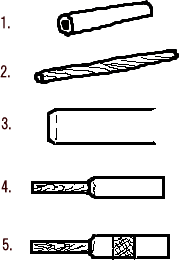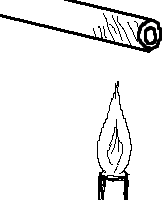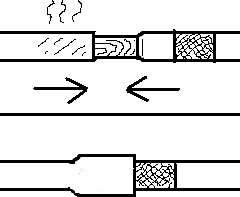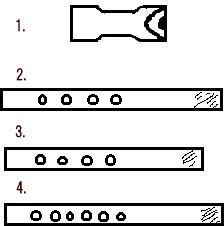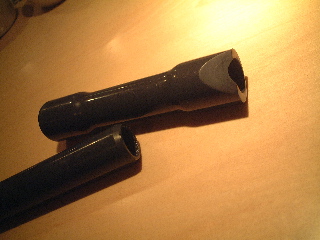1.8 (1.6) measurements (in millimeters) from
bottom of flute The diameter of the fingerholes is 10mm. ( ) indicate measurements for the 1.6 length. |
|
Materials:
|
|
(1)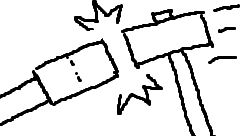 |
Apply glue to inside of the joint. While the glue is still wet, fit the pipe into the joint with a twisting motion. Use a wooden mallet to pound the joint the rest of the way on, until the pipe reaches the middle of the joint.(No farther!) |
(2)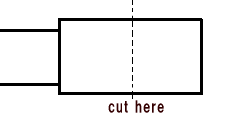 |
Use a saw to cut through the middle of the joint. |
(3)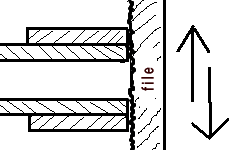 |
File the surface edge of the joint until it is flat with the pipe inside. |
(4)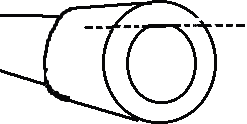 |
With a pencil, draw a line tangent to the circumference of the inner wall. |
(5)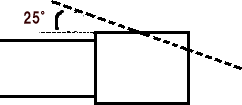 |
Make an oblique cut along the line drawn
in diagram 4 at the angle shown in diagram
5. |
(6)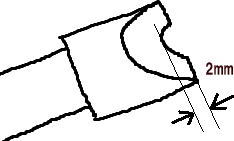 |
File the surface of the oblique cut until it is smooth and the depth of the mouthpiece indentation is 2mm. (The side edge of a grinder or belt sander works really well for this job.) |
(7)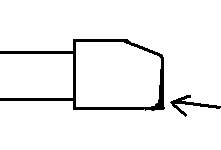 |
Use a file to slightly round the back edge of the mouthpiece where it rests against the chin. |
(8)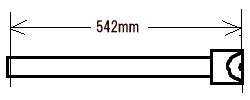 |
Use a saw or a file to adjust the length to 542mm. (Cut from the bottom end.) |
(9) |
Tape a piece of thread to the center front
of the shakuhachi. Use this as a guide to
mark the centers of the fingerholes with
a pencil. (Refer to diagram at top of page.) To mark the location of the back hole, cut a strip of paper to the same measurement as the circumference of the pipe. Fold the strip of paper in half, and mark this spot with a pencil. Align the spot with the center front thread, and where the ends of the paper meet in back of the flute is where you mark for the center of the back hole. |
(10)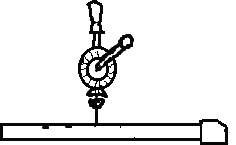 |
Use a 10mm drill bit to open the holes. |
(11)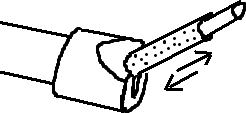 |
Use sandpaper to smooth all the newly cut
or filed surfaces, including the fingerholes.
Wrap sandpaper around a wooden block for
straight edges, and around a pencil for round
edges. Use very fine sandpaper to round away
a very small amount from the inside of the
mouthpiece, as shown in diagram 11. (The
final depth of the mouthpice indentation
should be around 3mm.) Your PVC shakuhachi is finished! |
(12) Respective scales for the 1.8 (upper) and
1.6 (lower).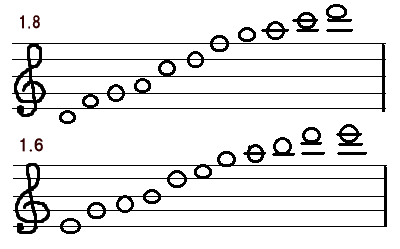 |
|

